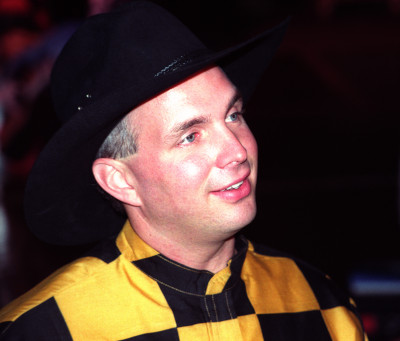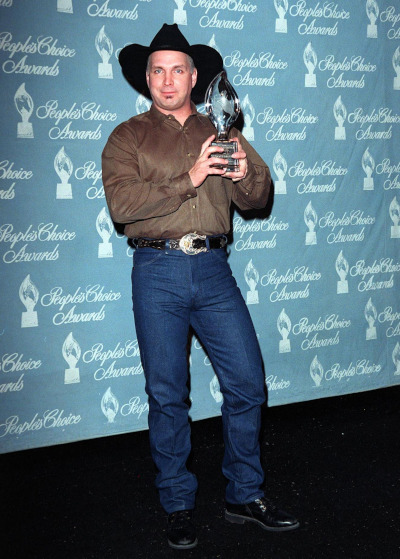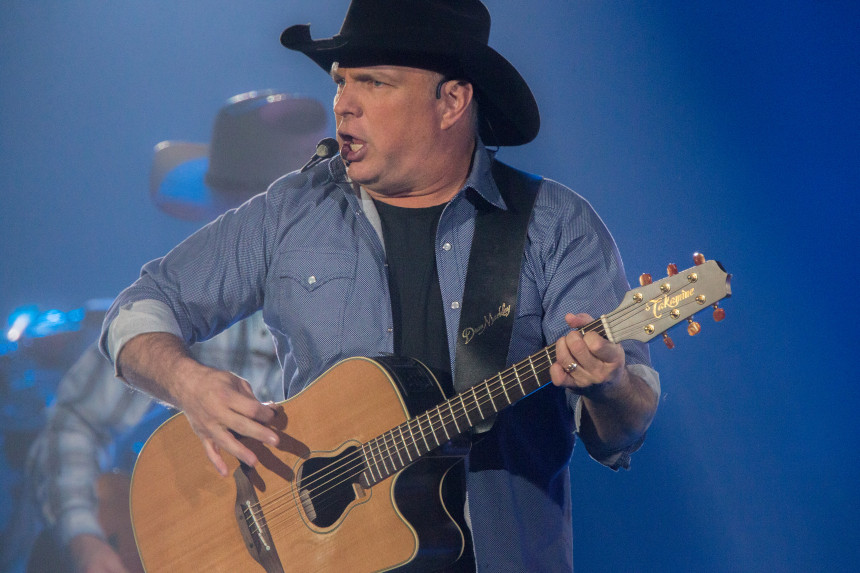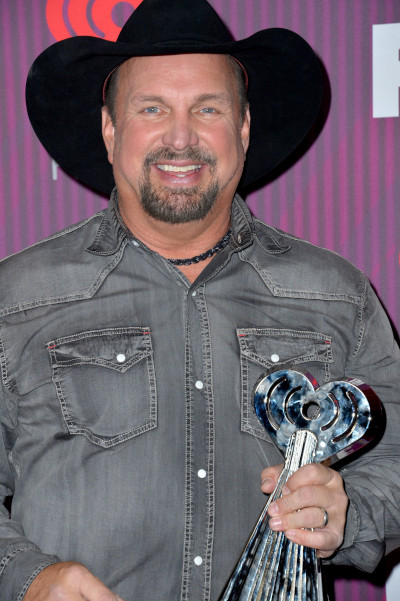30 Years Ago, No Fences Established Garth Brooks as Country Royalty
It’s hard to decide exactly where to start with Garth Brooks. That he’s the best-selling solo albums artist in the history of the United States? That only The Beatles have sold more albums? What about the fact that he’s the only artist to sell 10 million copies each of nine different albums? Then there’s the pick-up truck full of Grammys, American Music Awards, and gold and platinum records, and that’s before you get to the swelling list of Hall of Fame inductions. He is, after all, the youngest person to receive the Library of Congress Gershwin Prize for Popular Song. And even though his debut album was a hit, Brooks truly ascended to next-level stardom with his second effort, No Fences, which hit stores 30 years ago this week.
If you knew Troyal Garth Brooks in high school, you might be forgiven for thinking of him as an athlete rather than a music guy. Born in 1962 in Oklahoma, Brooks would stand out in track and field, baseball, and football. He even went to Oklahoma State University on a track scholarship, specializing in javelin. But the other side of Brooks was that his mother was Colleen McElroy Carroll, a country singer who had been signed to Capitol Records and performed on television shows like Ozark Jubilee. His family held weekly talent shows that all the kids had to take part in; consequently, Brooks learned to play banjo and guitar. At OSU, his roommate, Ty England, played guitar and would soon become Brooks’s sideman.

Brooks graduated OSU in 1984 with an advertising degree, and the following year he began to play the local circuit. His influences came from a wide spectrum, including rock acts like KISS and singer-songwriters like James Taylor. But George Strait and Chris LeDoux in particular were the artists that drove Brooks toward country. Once he got connected in Nashville via entertainment lawyer Ron Phelps, Brooks was on his way toward his first deal.
Brooks put out his self-titled debut, Garth Brooks, in 1989 on his mom’s old label, Capitol. In his first taste of crossover success, Brooks saw his #2 country album also hit #13 on the Top 200.He wrote or co-wrote the first three singles from the record, all of which went Top 10 country, with “If Tomorrow Never Comes” hitting #1. The fourth single was written by Tony Arata; it was called “The Dance.” The #1 hit made Brooks a star on country television with its emotional video that paid tribute to late public figures from the towering (Martin Luther King, Jr., John F. Kennedy) to the lesser-known (bull rider Lane Frost, singer Chris Whitley). Brooks still considers the worldwide hit to be his favorite song from his own catalog.
However, Brooks’s second effort just a year later would turn out to be landmark not just for him, but for country as a whole. No Fences dominated the Country Albums chart with 23 straight weeks at #1 while also hitting #3 on the Billboard 200. It remains his best-selling individual album, with 17 million copies shipped in the U.S. alone. The album produced four #1 singles (“Friends in Low Places,” “Unanswered Prayers,” “Two of a Kind, Workin’ on a Full House,” “The Thunder Rolls”) and a #7 (“Wild Horses”). In particular, “Friends in Low Places” became a phenom unto itself; after a four-week run at #1, it ended up winning both the Country Music Association and Academy of Country Music Awards for Single of the Year. So pervasive was the song that year that it was a Top 40 hit on the U.K. charts while making the Top 100 on the Eurochart. It now routinely appears on lists of “Best Drinking Songs.”

In stark contrast to “Friends,” “The Thunder Rolls” sparked enormous controversy when Brooks delivered the music video. Composed by Brooks and Pat Alger, the original version of the song had four verses; the song is about a cheating husband, and the last verse suggests that the scorned wife shoots him. Ultimately, the fourth verse was omitted when the song was recorded for the album. However, Brooks felt that he had the opportunity to make a statement, and the moody music video was constructed to make a point about domestic violence. Brooks even portrayed the cheating, abusive husband himself. Almost immediately upon release, TNN (The Nashville Network) and CMT (Country Music Television) banned the video, citing violence and a reluctance to dive into social issues as reasons. VH-1 took up the video a few days later, and Capitol was deluged with requests for the video from alternate venues. The clip was eventually named the CMA Video of the Year and was nominated for a Grammy.

Brooks didn’t let the iron cool before striking again. Ropin’ the Wind shipped four million copies in advance of its September 1991 release. The artist would also soon benefit from the introduction of SoundScan, a new sales tracking system that digitally counted sales by individual unit rather estimates given by store managers and owners. The new system turned album sales on their collective head, demonstrating that genres like country, hip-hop, and alternative rock were actually selling in much larger numbers than had been figured before. The album debuted at #1, was briefly dislodged for two weeks by the release of Use Your Illusion II by Guns N’ Roses, and then retook the top spot for a seven-week run. At the beginning of 1992, Brooks swapped the top spot with Nirvana’s Nevermind before settling in for another eight-week run.
From there, Brooks has had a career that can mostly be summed up by superlatives. His total output since 1989 is substantial on any scale; he’s released 77 singles, 12 studio albums, three Christmas albums, and a number of compilations and boxed sets. While Brooks took his foot off the throttle in the 2000s, actually going 13 years between the releases of Scarecrow and Man Against Machine, and though his most recent studio albums haven’t sold as well, his catalog continues to move and he remains a massive live draw around the world. To date, he’s sold a mind-boggling 170 million records. Brooks has expressed dissatisfaction with the payouts delivered by digital services like iTunes, Spotify, and YouTube, which is why you won’t find his videos on the latter; that situation may have also affected his more recent sales totals in a negative way, given the popularity of digital formats and the fact that those formats now figure into chart data.

Of course, it would be unthinkable to count a personality like Brooks out. Against conventional wisdom, he took a brand of country merged with arena rock to the top of the charts, and kept it there for years. His work remains some of the best known in the genre, and still benefits from significant airplay and back-catalog sales. He’s a member of the Grand Ole Opry, the Country Music Hall of Fame, the Songwriters Hall of Fame, and the Musicians Hall of Fame and Museum. Brooks may have staked out country immortality by singing about friends in low places, but he’s put together a career defined by highs.
Featured image: Sterling Munksgard / Shutterstock